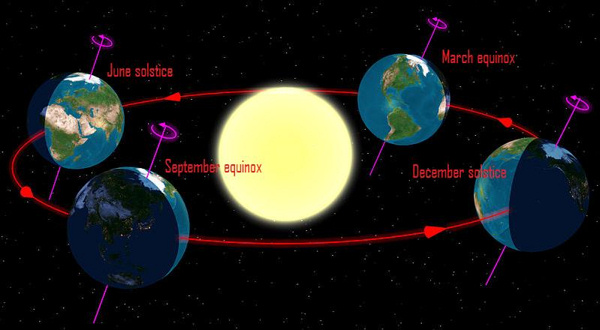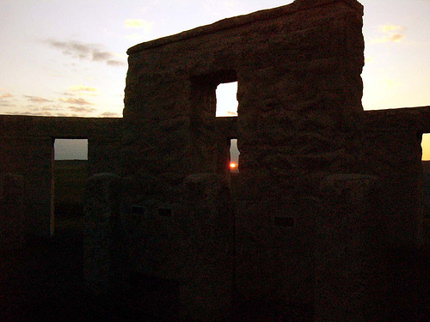Source: EarthSky.org - 3/20/13, Bruce McClure
Image credit: thatleftlane
The March 2013 equinox happens on March 20 at 11:02 Universal Time, which is 6:02 a.m. Central Daylight Time for us in the central U.S. The March equinox signals the beginning of spring in the Northern Hemisphere and autumn in the Southern Hemisphere.
A Chinese perspective on the spring equinox
Equinox 2013 comes before sunrise March 20 for most of U.S.
Everything you need to know: Vernal or spring equinox 2013

The ecliptic and celestial equator intersect at the spring and autumn equinox points. The ecliptic represents the sun's apparent yearly path in front of the constellations of the Zodiac.
The equinox represents a point on Earth’s orbit, but it’s also an event that happens on the imaginary dome of Earth’s sky. It marks that special moment when the sun crosses the celestial equator going from south to north.
The imaginary celestial equator is a great circle dividing the imaginary celestial sphere into its northern and southern hemispheres. The celestial equator wraps the sky directly above Earth’s equator, and at the equinox today, the sun crosses the celestial equator, to enter the sky’s northern hemisphere. All these components are imaginary, yet what happens at every equinox is very real – as real as the sun’s passage across the sky each day and as real as the change of the seasons.
Our ancestors couldn’t have understood the equinoxes as we do. They didn’t understand them as events that occur in the course of Earth’s yearly orbit around the sun. But if they were observant – and some were very observant indeed – they surely marked today as being midway between the sun’s lowest path across the sky in winter and highest path across the sky in summer.
Seasonal Diagram

The seasons result from the Earth's rotational axis tilting 23.5 degrees out of perpendicular to the ecliptic - or Earth's orbital plane.
If they thought in terms of four directions, they might also have learned a fact of nature that occurs whenever there’s an equinox – whenever the sun crosses the celestial equator. Since the celestial equator intersects the horizon at due east and due west, the sun rises due east and sets due west on the day of the equinox, as seen from everywhere on the globe.
Bottom line: The 2013 March equinox comes on March 20 at 11:02 Universal Time – or 6:02 a.m. Central Daylight Time for us in the central U.S. The March equinox signals the beginning of spring in the Northern Hemisphere and autumn in the Southern Hemisphere.
(Visit the link at the top of the page to listen to the 90 second podcast.)


 Courtesy U.S. Naval Observatory
Courtesy U.S. Naval Observatory
